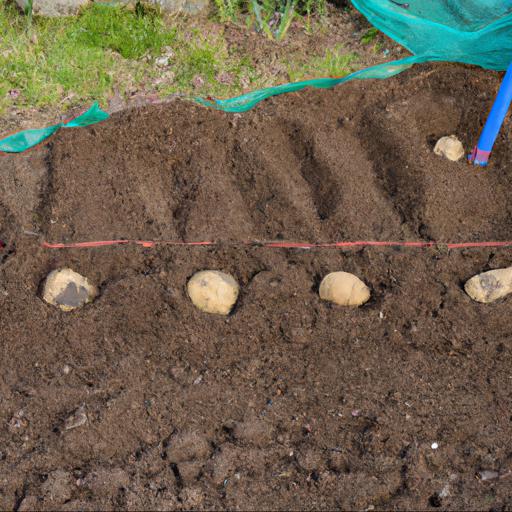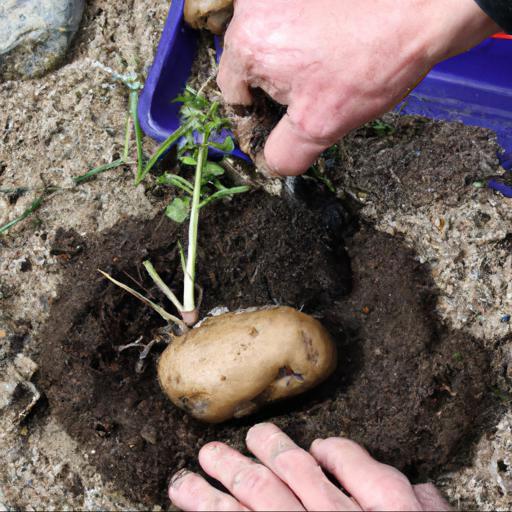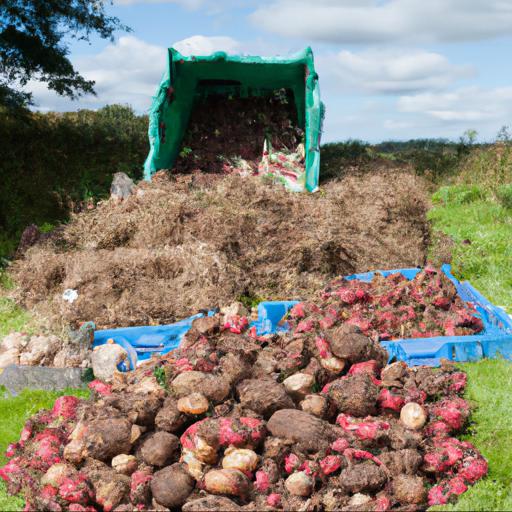Are you looking for a way to grow great jacket potatoes? Look no further!
In this blog post, we’ll be exploring the best techniques for growing delicious, fluffy potatoes with a perfect crunchy skin. We’ll cover soil preparation, planting, fertilization, and harvesting, so that you can have the perfect potatoes for your next meal. With our simple tips, you’ll be able to grow great jacket potatoes in no time!
So, let’s get started!
Preparing the soil for planting jacket potatoes

If you’re looking for great tasting jacket potatoes this season, you’ve come to the right place. Growing jacket potatoes is a rewarding experience and with a few simple steps you can prepare the soil to get your harvest off to a great start. Before you start cultivating the soil you should check the soil’s pH levels and adjust it to the optimum condition – a pH of
5 is recommended. This can be done by adding lime or green sand to the soil.
To help improve the structure of the soil, adding organic matter is a great idea. A mix of manure, compost, and general garden soil will give you a good growing environment.
As you are cultivating the soil breaking down any lumps and clumps to give a more uniform surface and consistency to the soil is ideal this will encourage the potatoes to spread evenly across the ground. Once the soil is to your desired level of consistency add in a layer of fertiliser, this is essential to your crop, don’t be tempted to miss this step out. With your soil prepared you are now ready to plant and enjoy some great tasting jacket potatoes.
By following a few simple steps and understanding the basics of soil cultivation you can be sure of a delicious crop of fantastic potatoes. Good luck and enjoy!
Planting and caring for jacket potatoes

Growing great jacket potatoes is not as hard as it may seem. With a little bit of knowledge and the right attention, you can enjoy an abundance of delicious potatoes year after year.
Jacket potatoes need full sun, plenty of space and warm soil temperatures to thrive. Choose a position in the garden with well-draining soil, and dig in plenty of compost and manure before planting your potatoes. Make sure the seed potatoes are free of blemishes, and plant them around 10 cm deep and 30-45 cm apart.
Water regularly and spread a generous layer of mulch to keep the soil cool and moist. Harvesting can begin when the potato foliage starts to die back and look yellow.
Carefully cut off the foliage and dig around the plant to isolate the potatoes, then use your hands to gently lift them out of the soil. Regular hoeing throughout the season will keep the weeds at bay – and also help aerate the soil to give your potatoes a better chance at success. It’s essential to keep an eye out for diseases and pests, like blight and potato cyst nematodes.
These can quickly devastate potato plants and spread to other plants if not spotted early and treated. By following the steps above, you’ll soon have a delicious bunch of jacket potatoes to enjoy. So get planting and enjoy the harvest!
Harvesting and storing jacket potatoes

Growing jacket potatoes is a great way to have a delicious autumn harvest. It can be a viable addition to most gardens with enough moisture and space. When done correctly, the results can tantalize even the most experienced potato grower.
With careful planning, planting and harvesting, anyone in the UK can grow great jacket potatoes for their family’s table. If you plan to grow potatoes, it is important to choose the right variety for your tastes and your garden.
Generally, the UK’s climate allows a wide range of varieties to be grown. Some popular types include King Edward, Maris Piper and Estima, to name a few.
As with any plant, choose ones that best suit your growing environment and soil conditions. Early and mid-season varieties can be planted as soon as the soil can be worked, which is usually around April. Once your potatoes are in the ground, keep the soil damp and well-weeded.
To ensure a good harvest, feed weekly after the shoots are 4-6 inches tall with a high potash fertilizer like Tomorite or a liquid seaweed fertilizer such as Neptune’s Harvest. When the tops of the plants die back, it is time to harvest.
This can happen anywhere from 12-16 weeks from planting, depending on the variety. Harvesting jacket potatoes must be done with great care. Use a fork to loosen the soil and gently lift the potatoes into pairs of hands.
Thick gloves reduce the risk of injury with the fork prongs. Be sure to check the potatoes for any damage before you store them. Finally, it is important to store your potatoes correctly so that they keep for an extended period. Approved storage containers like plastic bins with holes for ventilation and newspaper or straw lining are ideal. Keep the stored potatoes at a temperature between 4-7 ºC with a humidity of 85-90%. Try to keep the stored potatoes away from any type of light, including direct sunlight. Growing great jacket potatoes is a rewarding experience. With the right variety, planting, maintenance and harvesting, you can enjoy the results year after year. So grab your kit, get outdoors and start growing your delicious autumn harvest!
Troubleshooting common issues with growing jacket potatoes
Grow Great Jacket Potatoes: Troubleshooting Common IssuesGrowing jacket potatoes can be both satisfying and rewarding. A properly grown crop can provide copious amounts of some of the tastiest potatoes around.
Unfortunately, it’s not always easy to ensure that your potatoes are as good as they should be. While there are numerous possible issues, let’s take a look at some of the most common problems and how to solve them. The first issue is the height of the soil when planting.
If the soil is too deep the potatoes could fail to sprout; if the soil is too shallow the potatoes may grow too close together and fail to form around the eyes. To ensure your potatoes are planted at the correct height, dig a trench about four inches deep and let the seed potatoes rest on the bottom. As your potatoes begin to grow, apply a few more inches of soil until the trench is full.
The second issue is blossom end rot. You may notice a dark or discolored spot on your potatoes—this could be an indication of blossom end rot.
This is caused when plants suffer from too much water variability or too little calcium or magnesium. To avoid this, try to keep the soil evenly moist while not allowing it to get too dry. Similarly, consider adding some fertilizer or calcium carbonate to your soil to maintain the proper levels of calcium and magnesium.
The third issue is sprouting before planting. Some potatoes may sprout before being set in the ground, which can lead to them growing weak or misshapen.
To avoid this, store your potatoes in a cool and dark place and remove any that might begin to sprout. In conclusion, growing great jacket potatoes can be a rewarding, yet sometimes challenging, experience. To ensure the best results, it’s important to pay careful attention to details such as the planting depth, blossom end rot, and sprouting before planting. By troubleshooting these common problems, you can ensure your potatoes will grow strong and healthy!
Conclusion
This article provides tips on how to grow great jacket potatoes. It covers topics such as choosing the right variety, preparing the soil, planting, watering, weeding, and harvesting.
With the right knowledge and care, you can grow delicious potatoes that are perfect for baking, mashing, or frying. Follow these steps to get the most out of your potatoes and enjoy the rewards of a successful harvest.
FAQ
What is the best way to grow great jacket potatoes?
The best way to grow great jacket potatoes is to plant them in a sunny spot in well-drained soil, water regularly, and harvest when the plants start to die back.
What soil type is best for growing jacket potatoes?
Loamy soil with good drainage is the best soil type for growing jacket potatoes.
How often should jacket potatoes be watered?
Jacket potatoes should be watered once or twice a week, depending on the weather and soil conditions.
How long does it take for jacket potatoes to mature?
It typically takes between 8 to 10 weeks for jacket potatoes to mature.
What is the best fertilizer for growing jacket potatoes?
The best fertilizer for growing jacket potatoes is a balanced fertilizer with an NPK ratio of 10-10-10.
How can you tell when jacket potatoes are ready to be harvested?
When the potato skin is dry and papery and the potato is firm to the touch, it is ready to be harvested.

